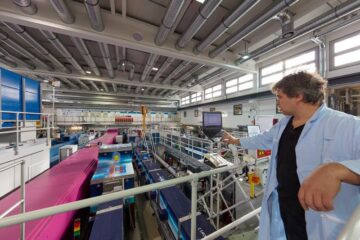Mycosis-Detect – In situ diagnosis of fungal infections by detection of Chitosan

Fungi comprise chitin as a natural building block in their cell wall. Pathogenic fungi are often able to convert the chitin to chitosan – probably to escape from being recognized by the immune response of the host. Thus, chitosan is an attractive target for the diagnosis of fungal infections allowing further treatment.
The present invention relates to a detection of pathogenic fungi using a GFP-labeled, catalytically inactive chitosanase, which retained the affinity and specificity towards chitosan. This new method provides a rapid, reliable and robust system. Commercial Opportunities: Fungal infections are a widespread ailment throughout flora and fauna. In humans, in particular in immunosuppressed patients, the increased incidence of severe mycoses is a challenge.So far, many attempts were run to produce antisera or antibodies against chitosan but have been of limited success due to the lack of antigenicity connected to chitosan. Additionally, antibody production is accompanied by high costs. Consequently, there is an unmet medical need for a quick, easy and cheap in situ detection of chitosan. The mutein described in the invention is a high-affinity binder of chitosan that could be used for analytical or diagnostic purposes. Both phytopathological and medical applications are conceivable.
Weitere Informationen: PDF
PROvendis GmbH
Tel.: +49 (0)208/94105 10
Ansprechpartner
Dipl.-Ing. Alfred Schillert
Media Contact
Alle Nachrichten aus der Kategorie: Technologieangebote
Neueste Beiträge

Bakterien für klimaneutrale Chemikalien der Zukunft
Forschende an der ETH Zürich haben Bakterien im Labor so herangezüchtet, dass sie Methanol effizient verwerten können. Jetzt lässt sich der Stoffwechsel dieser Bakterien anzapfen, um wertvolle Produkte herzustellen, die…

Batterien: Heute die Materialien von morgen modellieren
Welche Faktoren bestimmen, wie schnell sich eine Batterie laden lässt? Dieser und weiteren Fragen gehen Forschende am Karlsruher Institut für Technologie (KIT) mit computergestützten Simulationen nach. Mikrostrukturmodelle tragen dazu bei,…

Porosität von Sedimentgestein mit Neutronen untersucht
Forschung am FRM II zu geologischen Lagerstätten. Dauerhafte unterirdische Lagerung von CO2 Poren so klein wie Bakterien Porenmessung mit Neutronen auf den Nanometer genau Ob Sedimentgesteine fossile Kohlenwasserstoffe speichern können…

















